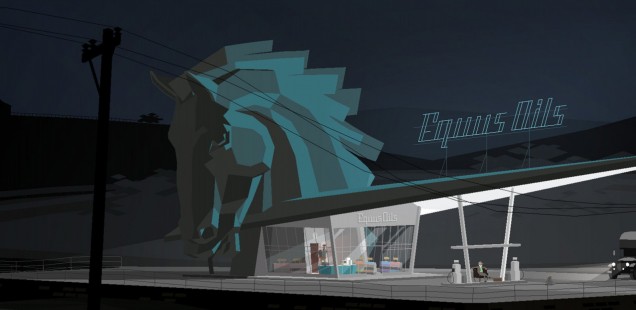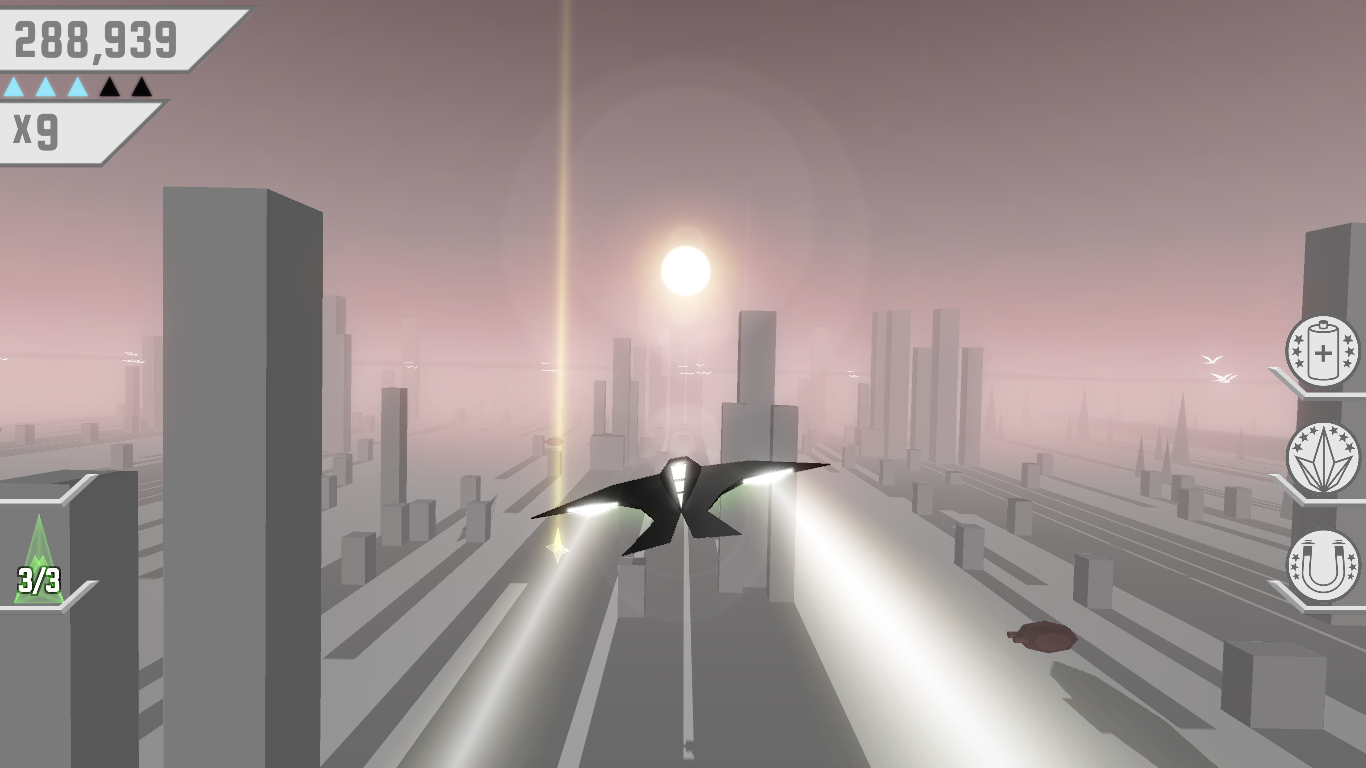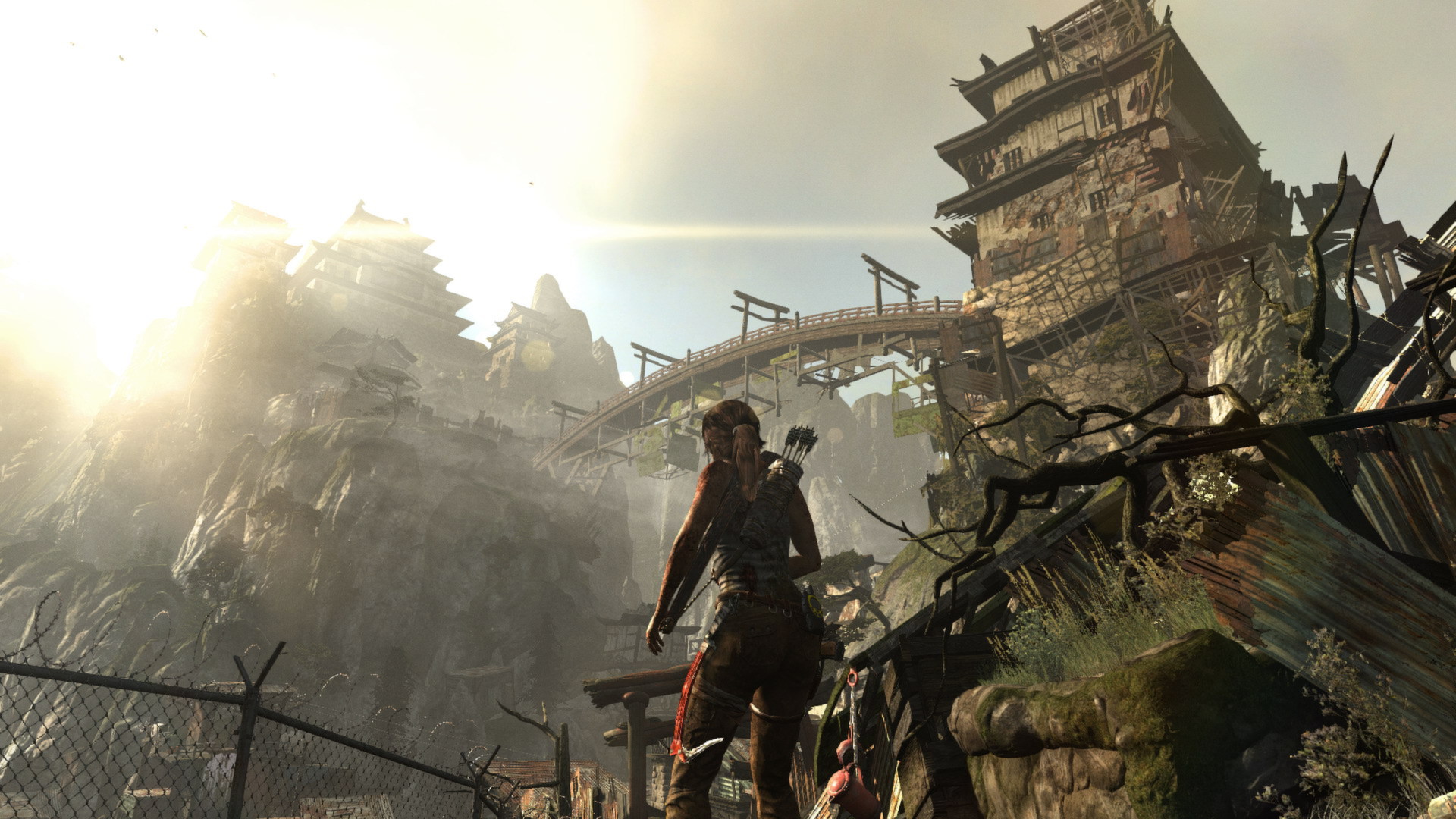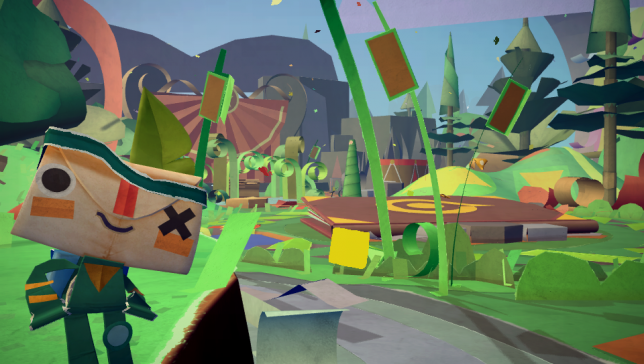
Games of 2013 (2/10)
A few of the games we liked last year.
There were a lot of great games in 2013. Far too many, in our opinion, for a list of five or ten, or to declare one our definite champion. Even a list of fifty would not do them justice, but we compiled one anyway. Over the next two weeks we’ll be highlighting five games a day, Monday to Friday. No ranks or numbers, they are all equally close to our hearts.
Kentucky Route Zero
In retrospect, it’s easy to say that watchful eyes could have seen it coming. There were signs and portents aplenty. An IGF finalists nomination for A House in California, back in 2011. Ruins, ostensibly a game vignette about a dog chasing rabbits, but in actual fact a direct predecessor, with its remarkable use of lighting, words and an unashamed bravery to be intellectual and vulnerable. And finally, still in the same year, a Kickstarter with the seemingly modest promise to deliver “a magic realist adventure game” and an even more modest success of 8,583 dollars gathered. All that, right there out in the open. Still, nobody could have reasonably expected just how magical Kentucky Route Zero would turn out to be, nor how realistic.
I certainly didn’t see this incredible atmosphere coming. You might call it dreamy, until you remember that dreams have died long ago, left to haunt the reality of an economic crisis treated with admirable intelligence. Nor did I expect a seemingly simple point and click adventure could be transformed into a stage, reinventing everything that this medium thought to know about the shaping of spaces, and make it look easy in the process. Or the way Jake Elliott and Tamas Kemenczy would constantly shift perspectives, geometric as well as human, leaving us in a hazy state of surprise. All these sounds. All those colors, shaping a world so incredibly rich even after half a game… I simply did not see it coming. Any of it.
But maybe that’s the whole point. There are many good things you could say about Kentucky Route Zero, but maybe none are more important than the following: It’s there to make us see new things, and to see things anew.
– Christof Zurschmitten, Go to Haneda
The Stanley Parable
OK, so how do I go about describing The Stanley Parable? Let alone reviewing it.
Why am I asking you anyway? You’ll only be reading this after I wrote it.
How about I go for the metaphorical version?
The Stanley Parable isn’t so much a game as an experience. Imagine Kafka’s The Trial written by Jim Henson. Obviously without the muppets, or the musical numbers, or the trial…
Let’s start again.
The Stanley Parable was a Half-Life Mod that came out in July 2011. It looks into the idea of gaming tropes and seeks to utilize and confound them. The mod itself became so popular that the idea of a HD remix was greenlit in 2012. This lead to a demo, which satirizes demos, and then a proper blah blah blah
This is really boring, isn’t it? You can find all this stuff on the wiki. How about we talk about how it made us feel?
Let’s start again.
But that’s already been done in loads of other reviews. It’s got massive scores on Metacritic from people who loved it, and it’s been zero-bombed by all the people who say they finished it with all 8 achievements in an hour.
Yeah, I especially liked that one, because two of the achievements are impossible to get.
You can alter the PC clock to get one I think, but aren’t we getting away from the actual review?
Let’s start again.
You don’t think we’re over-using this joke, are you?
No, because it’s indicative of the gameplay.
Just stop criticizing what I write, we need to get to bed.
Well, you chose one of the most indescribable games to try and describe.
Yeah, well I’m sorry, I thought it’d be a challenge after reading so many other glowing reviews.
Let’s start again.
The Stanley Parable is a parable about Stanley. A Parable is a succinct, didactic story, which illustrates one or more instructive lessons or principles. Play The Stanley Parable and love your version of Stanley. Or don’t.
Race The Sun
It’s easy to dismiss Race The Sun as one of those eternal runner games that Canabalt made popular and Temple Run made tremendously profitable. But in doing so one might discount a title with a number of strengths that aren’t immediately apparent by pigeonholing it into a genre.
Race The Sun‘s low-poly, textureless, minimalist aesthetic openly and eagerly draws a lot from the original StarFox. Where Nintendo’s nascent 3D world held a distinct sense of colorful optimism though, Race The Sun is soaked in a fatalist gloom. While the game never establishes what you’re running from, it’s easy to make ominous inferences. From the endless wasteland dotted with jagged hills to the dropping bombs to the traps set up to catch you, Race The Sun‘s world presents a sort of passive hostility, combining totalitarian state oppression and post-apocalyptic landscapes without ever directly invoking either.
While that minimalism gives the base game its foreboding atmosphere, it also helps sustain the creation tools packaged with the game. Simple geometry and colors both limit and free would-be level designers – a green cone above a brown cylinder forms a tree, a few white bars convey a ramshackle picket fence, and a brown barrier that falls down as players draw close becomes a drawbridge. Object creation is hardly user-friendly, but it is powerful, opting to give players the opportunity to trigger events, set player float height, background colors and more.
But perhaps most surprising is the game’s ability to mask a really relaxing experience. Where Spelunky‘s daily challenges offer only one life and constant stress, the fact that Race The Sun‘s scoreboards and worlds reset every day devalues competition. Where Super Hexagon‘s bobbing and weaving carries omnipresent danger, Race The Sun‘s slalom between obstacles feels freeing and joyful. For all the high speed escapes, I find it’s very much a zen game, designed to empty your head of distractions rather than fill it.
– Chris Franklin, Errant Signal
Tomb Raider
When Tomb Raider came out in early 2013, I remember proclaiming to people how there’s no way the game was on any kind of budget. Playing the franchise reboot was like playing something that really shouldn’t be able to exist yet. Sure enough, recent reports from Square Enix are now saying that despite being one of the best selling games of the year, Tomb Raider didn’t even break even with costs. A management nightmare perhaps, but hey, not my problem.
The game just doesn’t stop. It breaks the familiar pattern we’ve been getting where set pieces and scripted sequences are the high points in between mechanical filler. Developers don’t have the resources to give you their best for 8 hours straight. A Dead Space game will have 30 minutes of masterfully scripted terror as its introduction, and then it’s a duck shooter. Uncharted 2 will have some kickass sequence on an exploding train and then it goes back to shooting pincushions and climbing lamp posts. That’s the reality of the HD era.
But Tomb Raider does not do this. It devours money. If you’re not fending off wolves with your foot in a bear trap, you’re racing down river rapids with a shotgun. If you’re not tripping over dynamite and swinging pick axes into cultists, you’re covered in blood and creeping through a cave of cannibals. You’re going full Green Beret and arrowing guards in the throat, zip lining down from a 200 ft radio tower and blasting your way out of a burning Edo era castle with a grenade launcher. And the filler? Well look, here’s a huge, creatively assembled environment with death defying heights and new toys to platform with. Sheer, unending entertainment. That’s the filler.
Tearaway
Tearaway is made with love. That is the best way to describe it. Every single bit of it is designed and crafted with so much love and attention it is impossible to not be charmed when playing the game.
Given a unique papercraft aesthetic, you play as a letter, trying to deliver your message to yourself, the actual you, the player. The game utilizes every single piece of the Vita to show off just what exactly the system can do, but each piece is used so often and feels so integral, the game doesn’t feel like a gimmick sideshow or some tech demo. You use the rear touchpad to make your finger burst through the floor to beat enemies and obstacles, tilt the Vita to move objects, open presents and paths by unfolding them on your main touchscreen and most uniquely, the game uses both cameras in a multitude of ways, from simply showing player’s faces in the sun or letting you pick a pattern for one of the many papercraft creations in the world. There is such a variety of things to do, and ways to do those things, the game manages to stay entertaining all the way from start to finish.
Tearaway is an absolute joy, absolutely oozing charm and is absolutely the best argument to pick up a Playstation Vita.



